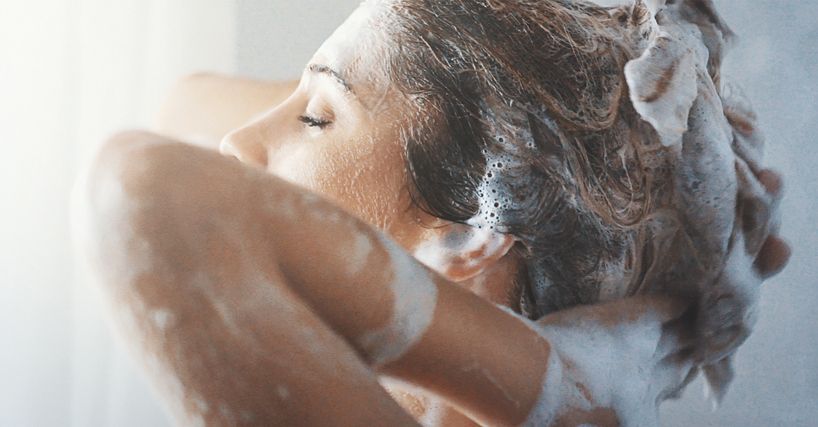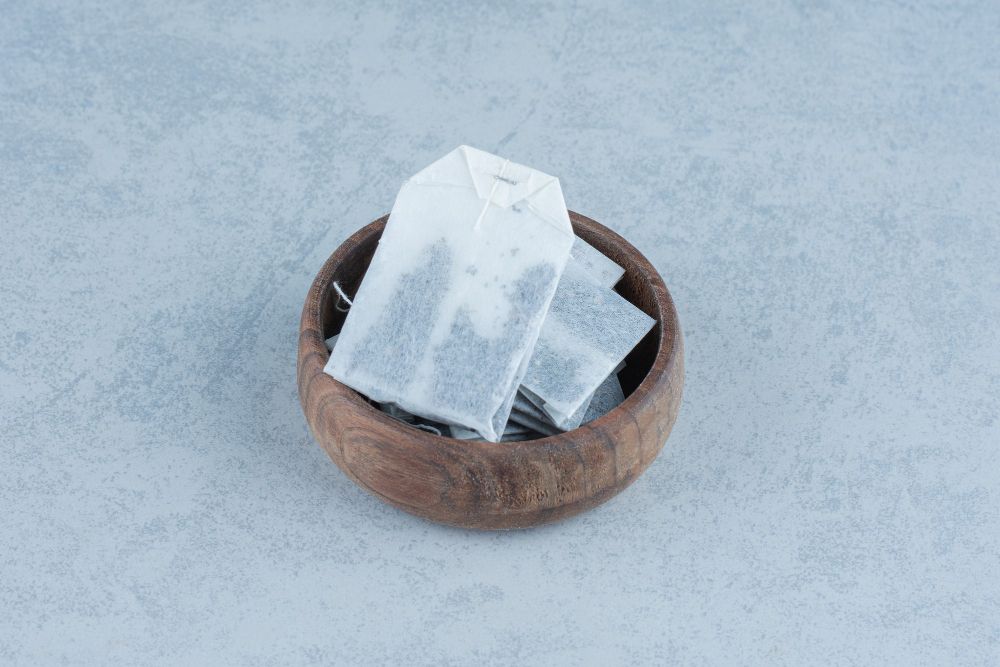
Book Now to Experience
IPL Hair Removal Treatment
1 Minute Self-Registration
Date should not be before minimal date
Author: Leila Tan|Updated: 23 July 2024
Whether or whether you choose to get rid of your body hair is a choice you have to make for yourself. You shouldn't feel pressured to shave your body if you don't want to, and doing so won't improve your health. Most people, however, would rather put off an appearance of order and polish when dressed a certain way. Since everyone's time and money is limited as we get older, hair removal becomes increasingly difficult and costly. Perhaps, it's time to look for a more permanent answer.

1
The Good: How Wax Has Become an Important Part to Prevent Hair Growth
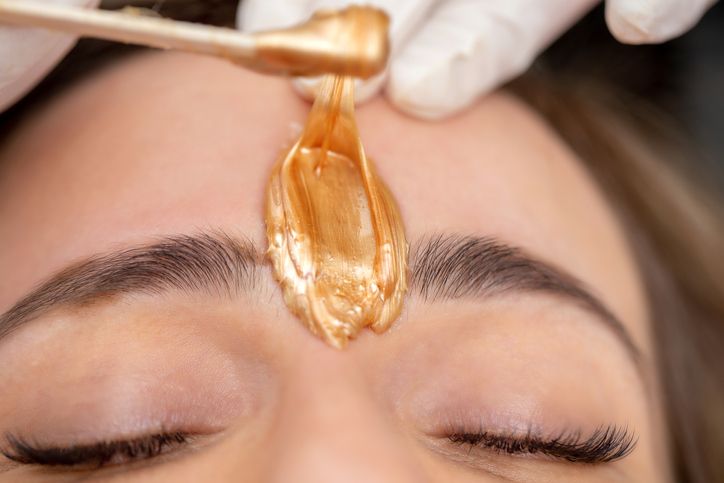
Wax usage was first done in ancient Egypt to get rid of hair that didn't belong. It was also talked about in the Bible, where both men and women were said to use wax for beauty. In Singapore, waxing has become very popular in the last few decades as more people realise how good it is for them.
The ways that waxing is done have changed a lot over time, especially in Singapore. In the past few years, many salons in Singapore have started using more modern methods like strip waxing, hot wax, and hard wax, which are more effective than older methods and also hurt less. As such, waxing has come a long way since it was first used thousands of years ago. It is now one of the most popular ways to get rid of hair in Singapore.

2
Is Combination or Single Use Better? Types of Wax Introduced
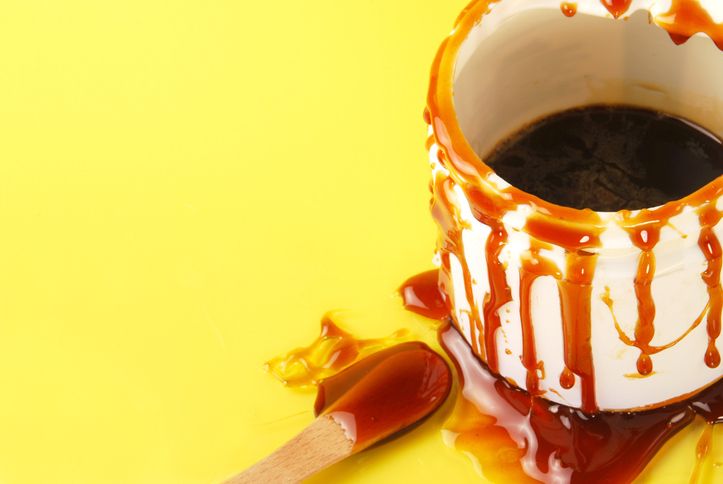
Waxing is a method for removing undesirable body hair that is long-lasting. To accomplish this, you apply melted wax to a tiny area of skin, cover it with a strip of cloth, then remove the wax and any hairs that have adhered to it as quickly as possible. Almost any portion of the body can be waxed, and the results typically last between 4 and 6 weeks. There are two primary methods of waxing:
Hot Wax
Thin strips of paper or fabric are coated with a mixture of natural resin and wax, which is then heated until it becomes liquid. The treated area is then coated with a thin coating of warm wax, topped with another strip, and let to cool for a few minutes. When the strip has become rigid, it is swiftly peeled off, along with any hairs that have adhered to it. Hot waxing produces longer-lasting results than cold waxing, but it might be more painful since the wax adheres more securely.
Cold Wax
For cold waxing, heated and cooled strips of beeswax, mineral oil, rosin, and other materials are utilised. This type of wax feels colder on the skin than hot wax, but it does not adhere as strongly to the skin's surface, therefore it does not last as long. Cold waxing typically cause less pain than hot waxing, but it must be performed more frequently to remove unwanted hair.
Both hot waxing and cold waxing are effective methods for removing hair from areas such as the legs, arms, and face. When removing cloth strip or bunches of hairs at once, however, half of the time you will feel discomfort when skin is being pulled. When these two procedures are used, the outcomes may be enhanced. The user can achieve smoother, longer-lasting hairlessness in sensitive areas such as the bikini line and armpits, where they need immediate, painless results.

3
The Bad: Downsides of Using Waxing Hair Removal
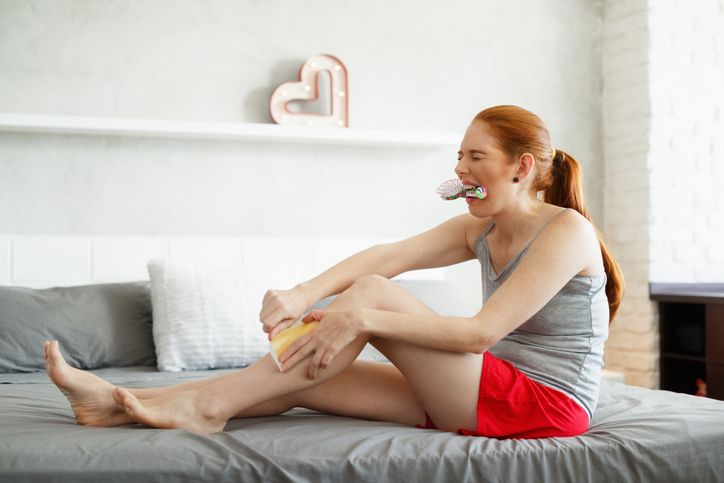
Since waxing is so easy, have you thought about doing it every day? Most people might think about using this method on their legs or arms. But there are a few things you might want to think about before you get that glowing skin, especially if you are worried about hair regrowth issues.
Redness on skin
Redness and irritation are two of the most common side effects of waxing, and their severity typically depends on the skin's sensitivity. When waxing, the hair is extracted from the follicle, so it is painful because the hairs' roots are being ripped out. Wear loose clothing and try to avoid rubbing the area.
Pimples!
Waxing always leaves pores open, which can cause acne. This is due to the fact that bacteria can enter the skin through the small cuts, causing inflammation and potentially an infection. Small bumps or whiteheads are common following waxing of the eyebrows, upper lip, wrist, or other body parts. Using a gentle exfoliant or honey prior to the procedure, followed by an anti-inflammatory agent such as toner, can aid in the prevention of these annoying breakouts.
Ingrown hair
Wax rapidly pulls out hair, causing damage to the hair follicle. When hair grows back, it may grow inward instead of outward as it normally would, resulting in an ingrown hair. This frequently occurs because wax is pulled against the direction of hair growth.
Allergies reaction
Some individuals may be allergic to the wax's ingredients, which may cause a mild or severe allergic reaction. In one instance, a woman who directly touched wax developed a rash that's red and itchy. You should first test it with a small amount on your skin before doing it to larger areas to determine its efficacy.
Infection
If there is a spot on the skin that was severely irritated or injured after waxing, an infection could develop. A piece of torn and swollen skin can result in folliculitis, an infection of the hair follicles. This rash is caused by a small infection in the open hair follicles left by waxing.
Aside from that, waxing the pubic region disrupts the skin barrier, making it easier for viruses to enter and spread, which could increase the risk of acquiring an STD (STIs). There is some evidence that getting a bikini wax and having all the hair removed is associated with a higher risk of transmitting sexually transmitted infections, but more research is required to determine this with certainty.

4
The Ugly: Hair Removal Alternatives, Ranked from Worst to Best
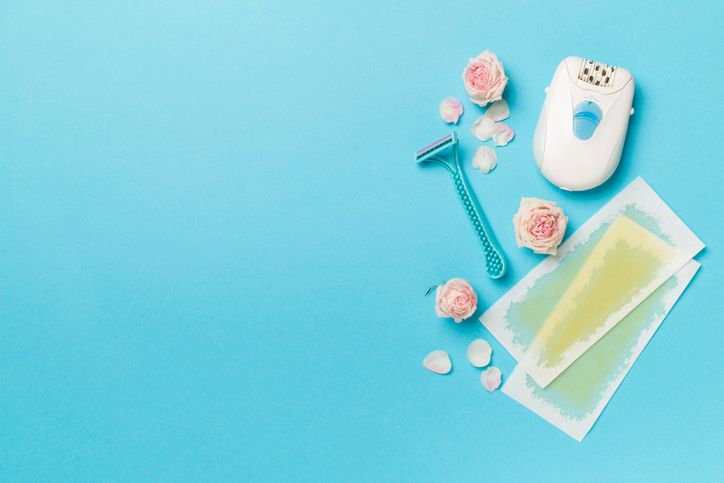
Plucking or tweezing
This is a popular method for removing single body hairs or shaping the brows. It provides you bigger, more natural-looking brows and greater control over how they are shaped. Plucking hairs can be uncomfortable, especially if there are a lot of them.
This approach isn't ideal for removing hair from big parts of the body, such as the legs, and it's nearly impossible to remove all hair from the bikini line.
Shaving
This procedure is simple, suitable for the upper lip, half arms and fingers, but may create both ingrown hairs and razor burns. Even though it is the most convenient technique to remove hair on your own, you can shave everything off and within a few days, hours, or minutes, all of the hair you removed will have begun to come back. Nobody can tolerate the abrupt transition from soft to rough. Shaving can create both large and small wounds on the skin, as well as the dreaded ingrown hairs. One advantage of shaving is that the razor itself exfoliates the skin.
Depilatory cream
This is a relatively simple and painless method of removing hair on your own. A liquid or cream is used to break down hair so that it can be scraped off and rinsed away. It's similar to shaving, but there's no chance of bleeding.
If you have sensitive skin, you should avoid using these creams. But if you do decide to try it, make sure to remove it entirely and never leave it on for longer than recommended, otherwise you may have a painful "slow burning" sensation! The cream also removes hair only beneath the skin's surface, thus it will regrow in two to three days. The effects are silky and rapid, but they do not persist as long as other methods of hair removal.
Electrolysis
In electrolysis, a dermatologist or an electrologist uses electricity to heat up the hair follicle and kill it for good. The technician will put a small probe into your pore, zap the hair follicle with electricity to kill it, and then pull the dead hair out with tweezers.
Even though electrolysis has no long-term side effects, it is considered to be much more painful than waxing or lasering. Some people who have electrolysis end up with thick scars and keloids.
IPL therapy or laser therapy
Laser technology has advanced significantly, allowing for the safe removal of hair from all skin tones and hair types. Newer lasers are able to accurately target hair follicles on all skin tones and hair types, whereas older lasers were less successful in locating and removing hair on darker skin tones or extremely light hair.
IPL (Intense Pulsed Light) and electrolysis are different because they treat different types of hair in different ways. By giving each hair follicle a small electric shock, electrolysis kills it. IPL uses very strong light to damage the hair follicles. Epilation is when a machine with tweezers and a motor pulls out a lot of hairs at once.
The main difference between IPL and Laser is the kind of light that is used. Laser light is one colour, doesn't change, and only goes after a few problems. IPL sends out a wide range of white light that looks like a rainbow. Filters can be used to change these colours.

Book Now to Experience
IPL Hair Removal Treatment
1 Minute Self-Registration
Date should not be before minimal date

5
The Effective Hair Removal Method for a Smooth and Glowing Skin
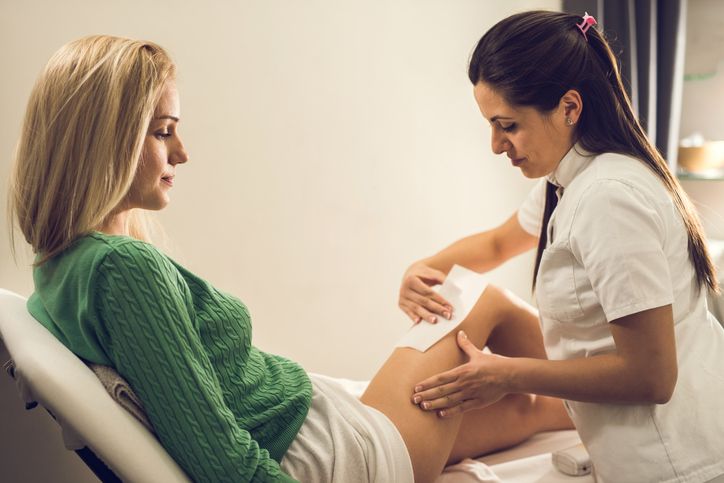
If you want the best results, the IPL Hair Removal Treatment at New Beauty gets rid of ingrown hairs for good, no matter how thick or dark the hair is. When the skin is heated, the body gets rid of old cells, which gets rid of the problem being treated.
The wellness professional at New Beauty starts the IPL Hair Removal Treatment by cleaning the area to be treated and doing a patch test to make sure you get the most out of it. During the session, you will also be told to wear goggles to protect your eyes. Then, the IPL Hair Removal Treatment handpiece is used to send light pulses into the skin to stop hair follicles from growing because they aren't getting enough nutrients. This also stops hair from growing back. Depending on the size and location of the area being treated, the session can last between 20 and 30 minutes.
Professionals at New Beauty say that you need between six and twelve sessions to get the results you want. You should wait about 30 days prior to the next session to give your skin time to heal. Sign up for a trial session and create your ideal hair removal journey with the right choice that could deliver the best result today!
FAQ
What can I use if I have dark spots after removing hair?
Tea tree oil is a great way to get rid of dark underarms, according to research. It not only makes the area brighter, but it also keeps things smelling nice. Its antimicrobial properties kill microbes and keep your armpits from smelling bad. Apple cider vinegar helps get rid of dead skin cells because it contains amino and lactic acids. Also, its astringent properties help open up pores, which makes dark spots less noticeable. It also makes the area under your arms much smoother. Turmeric can heal and lighten the tone, so putting it on the underarms along with an antibacterial ingredient will make you look better and stop itching. You should try these tips in the bathroom, though, or you might stain your clothes.
What damages the skin the most?
The sun penetrates the layers of the skin. This works well to warm you through radiant heating, but it causes several layers to age rapidly. Numerous individuals suffer the most damage from the sun. The sun reduces collagen formation and alters the suppleness. These two factors trigger the development of wrinkles throughout time. The sun also induces a shift in melanocytes, which might result in white spots. Sun exposure can also result in hyperpigmentation. Although some individuals apply sunscreen or sunblock to protect their skin, it is best to avoid the sun whenever possible. Utilise caps and other objects that effectively shield the sun's rays. Everything surrounding the skin has an effect on it. As the biggest organ in the body, it serves to clean and protect the body. This is why skin disorders manifest when something is amiss within. Pollutants in the air, clothing detergents, cleaning agents, soap, cigarette smoke, and other substances may include hazardous chemicals that can cause itching, rashes, acne or hives, and other problems. It is prudent to avoid strong chemicals, but it is also essential to drink enough water to purge the body of toxins. Consume fruits and vegetables to help battle cancer-causing free radicals.
Why do some people have no body hair?
No one knows why this is the case, but it could be because of poor circulation, lower levels of hormones that are free to move around, or other things. Men with serious illnesses like Klinefelter syndrome, hypogonadotropic hypogonadism, and XX male syndrome may have less body and facial hair. No matter what gender you are, hair covers most of your body from birth on. The density of hair and the number of hair follicles per unit area of skin are different for each person. The fact that their growth cycles are different can explain why the hair on the back of the hand and pubic hair are different lengths. The same is true for the different lengths of body hair on different people.
What can I eat to have hairsome and smooth skin?
Not all fats are bad for you. One type of good fat is omega-3 fatty acids. They are especially useful for persons who want to avoid fine lines and wrinkles on their skin. According to Keri Glassman, RD, a dietitian in New York City, omega-3 fatty acids reduce inflammation, which can create wrinkles, and prevent collagen breakdown. According to the National Institutes of Health, walnuts and flaxseed are both rich suppliers of these fats. Avocados can also be useful. They are high in nutrients that are beneficial to the skin. Avocados contain a high concentration of sterolins, which soften and moisturise the skin. They also contain vitamin E, which promotes collagen production and helps the skin retain moisture. According to Zeichner, collagen is a fibrous protein that the body produces on its own. It aids in the restoration of connective tissue and the strength of hair, nails, and skin. Consuming foods high in vitamins A and C, such as blueberries and kale, has also been found to promote collagen formation.
Is this treatment right for me?
Traditional lasers are only appropriate for those with lighter complexion and darker hair pigmentation. Please register online for a free trial of IPL Hair Removal Treatment to find out if it is right for you. Laser hair removal, a free consultation, and professional hair analysis are all included in the free trial. We will assist you in determining your hair type and the best treatment strategy for you.

Book Now to Experience
IPL Hair Removal Treatment
1 Minute Self-Registration
Date should not be before minimal date
Recommended Articles
COPYRIGHT© NEW BEAUTY MANAGEMENT LIMITED 2025. ALL RIGHT RESERVED.

